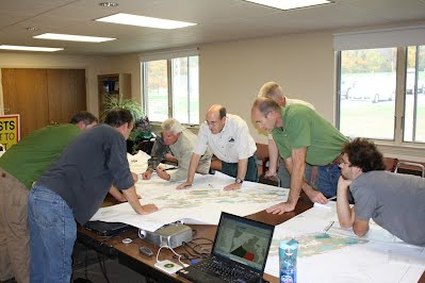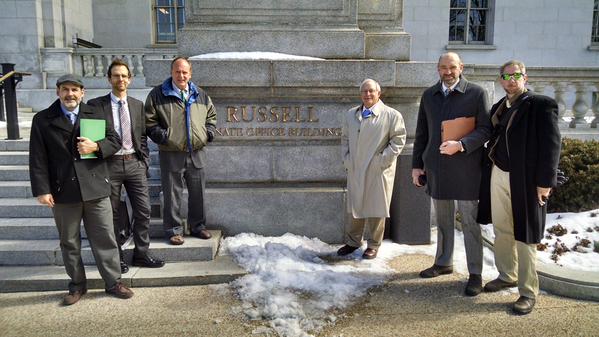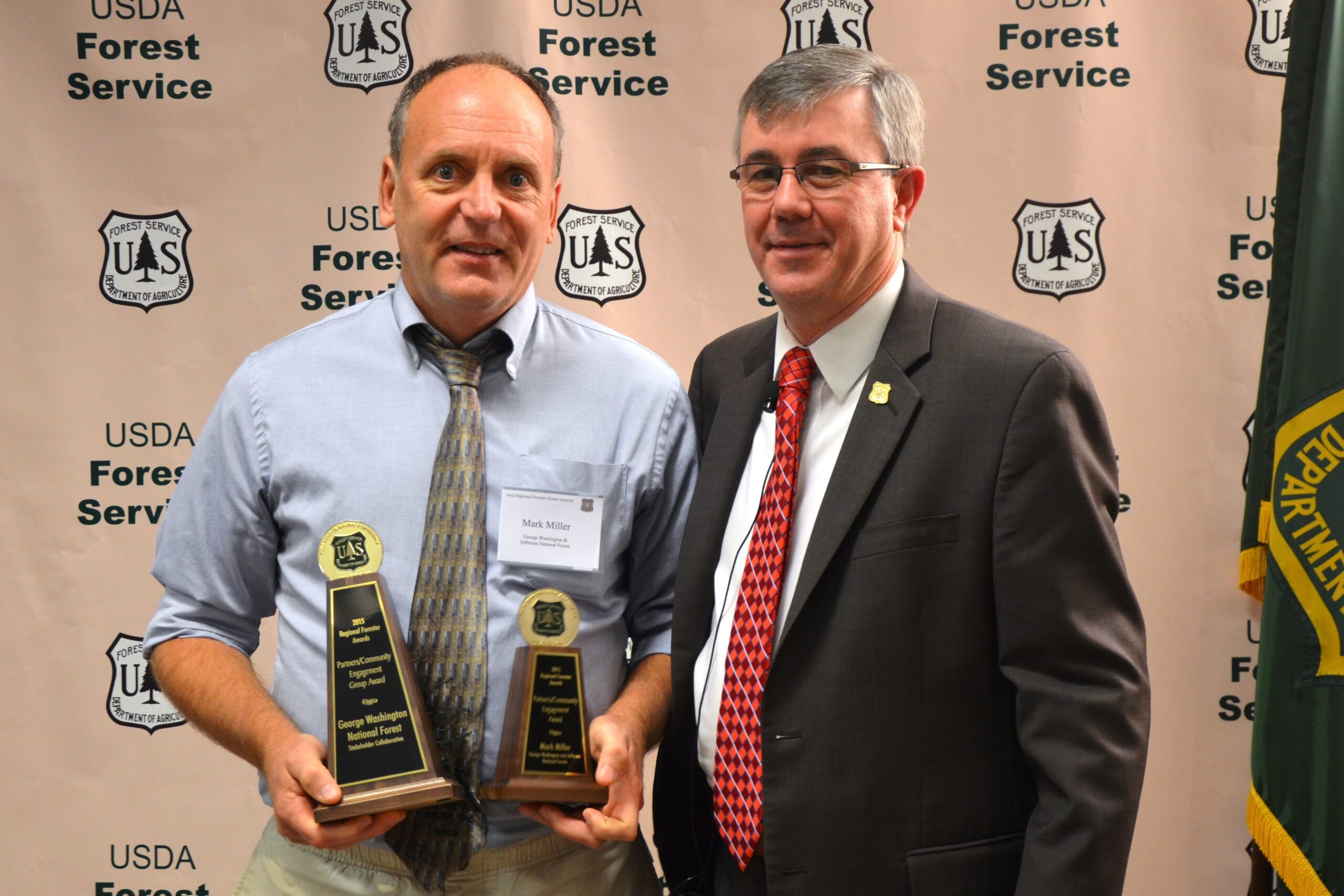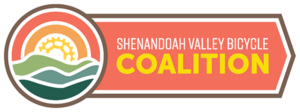(January 6, 2016) Roanoke, VA – The USDA Forest Service presented the George Washington National Forest Stakeholder Collaborative, a partnership of 19 local organizations and other individuals, with the 2015 Partners and Community Engagement award for their efforts on the George Washington National Forest Land and Resource Management Plan (Plan) and Lower Cowpasture Restoration and Management Project.
Collaborative, a partnership of 19 local organizations and other individuals, with the 2015 Partners and Community Engagement award for their efforts on the George Washington National Forest Land and Resource Management Plan (Plan) and Lower Cowpasture Restoration and Management Project.
This regional award honors one partner group selected from among 17 National Forests in 13 southern states. The award recipients were recognized for their innovative and creative approaches to building partnerships and implementing Forest Service projects.
The award recipients represent: The Virginia Department of Game and Inland Fisheries; Society of American Foresters; Shenandoah Valley Bicycle Coalition; Virginia Wilderness Committee; The Nature Conservancy; Shenandoah Mountain Touring; Bath County Board of Supervisors; Virginia Council of Trout Unlimited; The Nature Conservancy; Virginia Forestry Association; Quality Deer Management Association – Rockingham Branch; Southern Environmental Law Center; Virginia Wilderness Committee; Friends of Shenandoah Mountain; Virginia Chapter Sierra Club; Virginia State Chapter National Wild Turkey Federation; Alleghany County Board of Supervisors; Virginia Bear Hunters Association; and Virginia State Leadership Team, Rocky Mountain Elk Foundation, James River Chapter of Ruffed Grouse Society.
This diverse group of stakeholders united in 2010 with the goal of developing recommendations for the management of the George Washington National Forest. The Collaborative built trust among diverse interests and found common goals. Through open dialog and use of resources such as the University of Virginia’s Institute for Environmental Negotiation, representatives from the participating organizations built consensus around a suite of issues that have traditionally been contentious and polarizing.
The Collaborative is convened by a six-member steering committee: Al Bourgeois and Jay Jeffreys (Virginia Department of Game and Inland Fisheries), John Hancock (Virginia Forestry Association/Society of American Foresters), Kyle Lawrence (Shenandoah Valley Bicycle Coalition), Mark Miller (Virginia Wilderness Association), and Marek Smith (The Nature Conservancy).
The product of their efforts was the submission of joint comments on the George Washington National Forest Draft Plan. The Final Plan, released in November 2014, reflected many of the recommendations and received broad public support as a result of the diligence of the Stakeholder Collaborative. The Forest Plan recommended additional acres of Wilderness and a National Scenic Area, as well as additional areas and objectives for management activities such as timber harvesting, controlled burning, and other habitat management techniques.
According to John Hancock, one of the steering committee members who helped initiate the group, “We realized early on that each us had work we wanted to see accomplished on the forest, and while those goals were often very different, they were not mutually exclusive. The old model was to talk to the agency to try to persuade them to do what we individually wanted them to do. This new model is to talk to each other first, reach some consensus, and then work with the agency to try to achieve a suite of outcomes that works for us all. The Forest Service has the authority and responsibility to meet the objectives set out in the Forest Plan, and our group is helping them to that end.”
Following release of the Forest Plan, the Stakeholder Collaborative continued their work with the Forest Service through collaboration on the 117,000-acre Lower Cowpasture Restoration and Management Project. This project was the Forests’ first-ever large landscape and integrated resource planning effort. The Stakeholder Collaborative participated in public workshops, encouraged public and county engagement, and provided input to identify priority restoration efforts and management activities. Their efforts produced a plan which outlines a roster of restoration and management projects to take place over the next ten years. These proposed projects include timber management, road restoration and management, fish and aquatic organism passage improvements, wildlife habitat management, American Chestnut restoration, non-native invasive species control, recreational trail development, and prescribed fire.
These projects reflect the unified Vision Statement of the partnership:
“We envision a well-connected network of core, relatively unfragmented, forested areas embedded within a landscape of diverse age and structural character that supports a variety of wildlife species, builds ecological resilience, and provides essential ecological, social, economic, and recreational benefits for people.”





